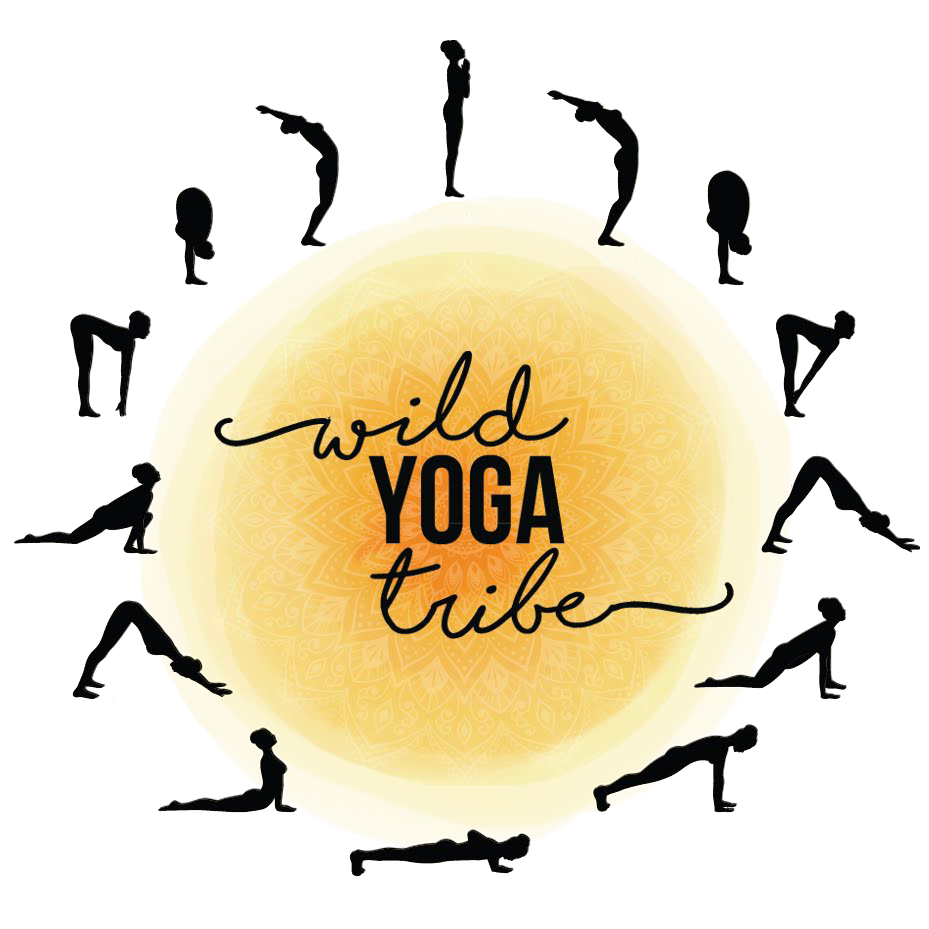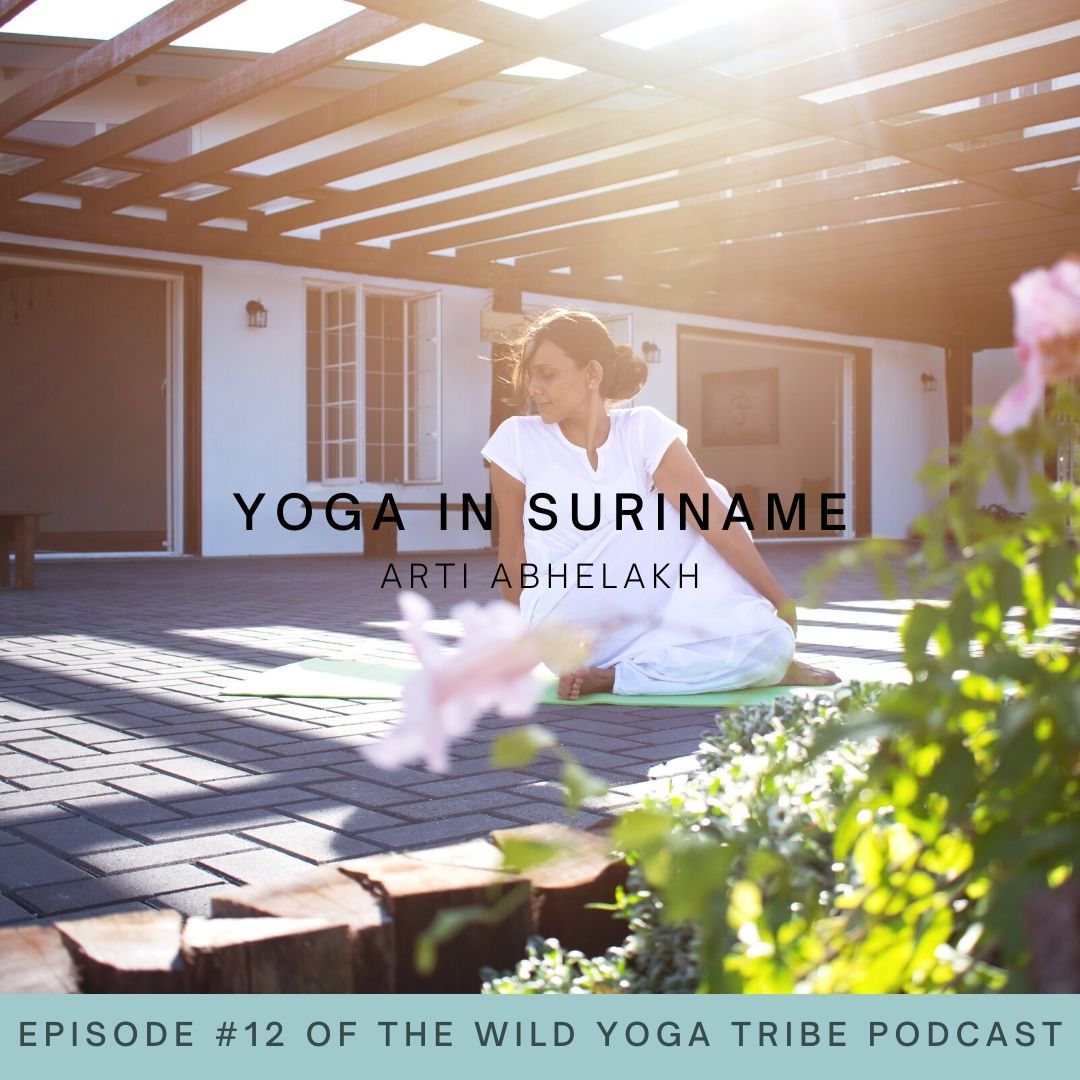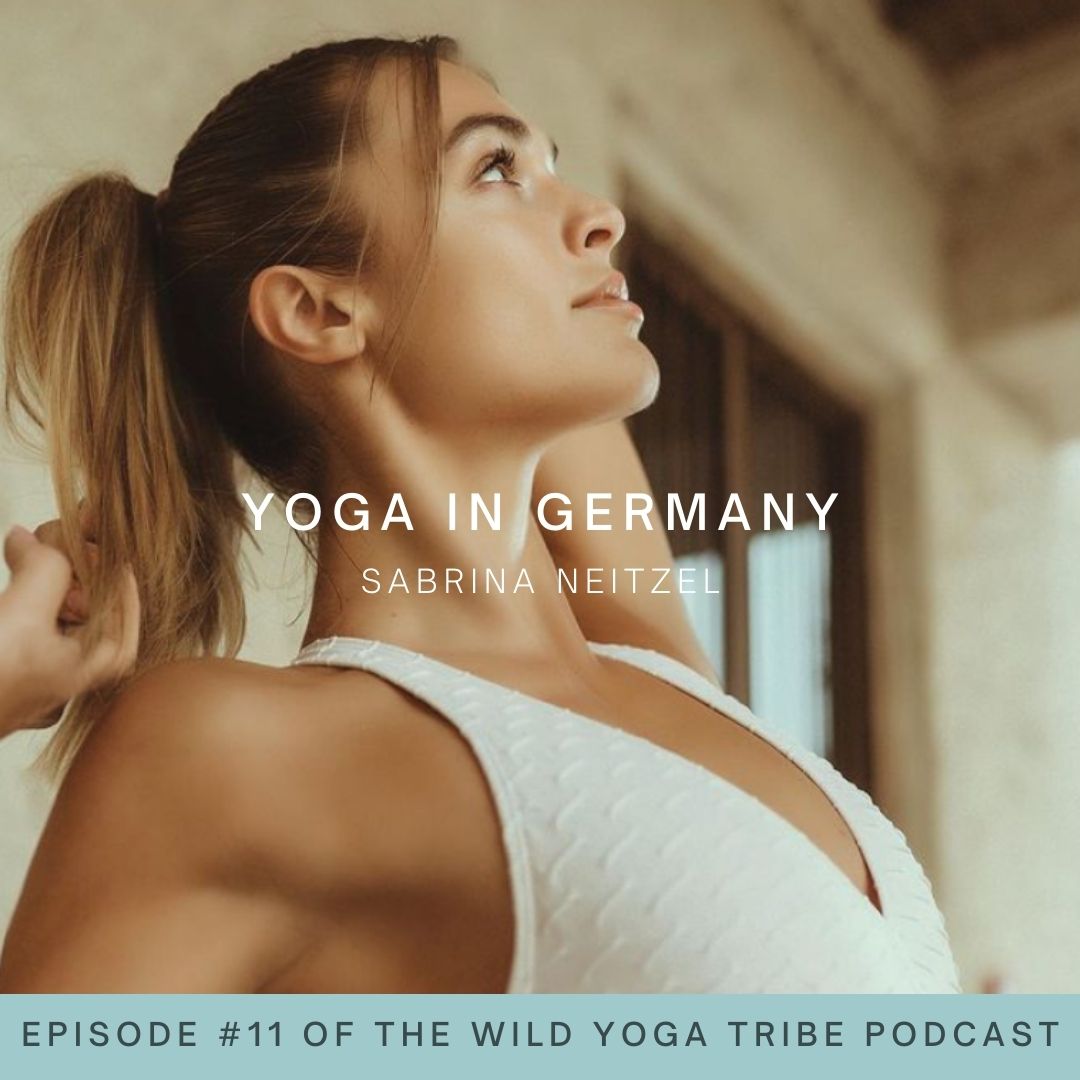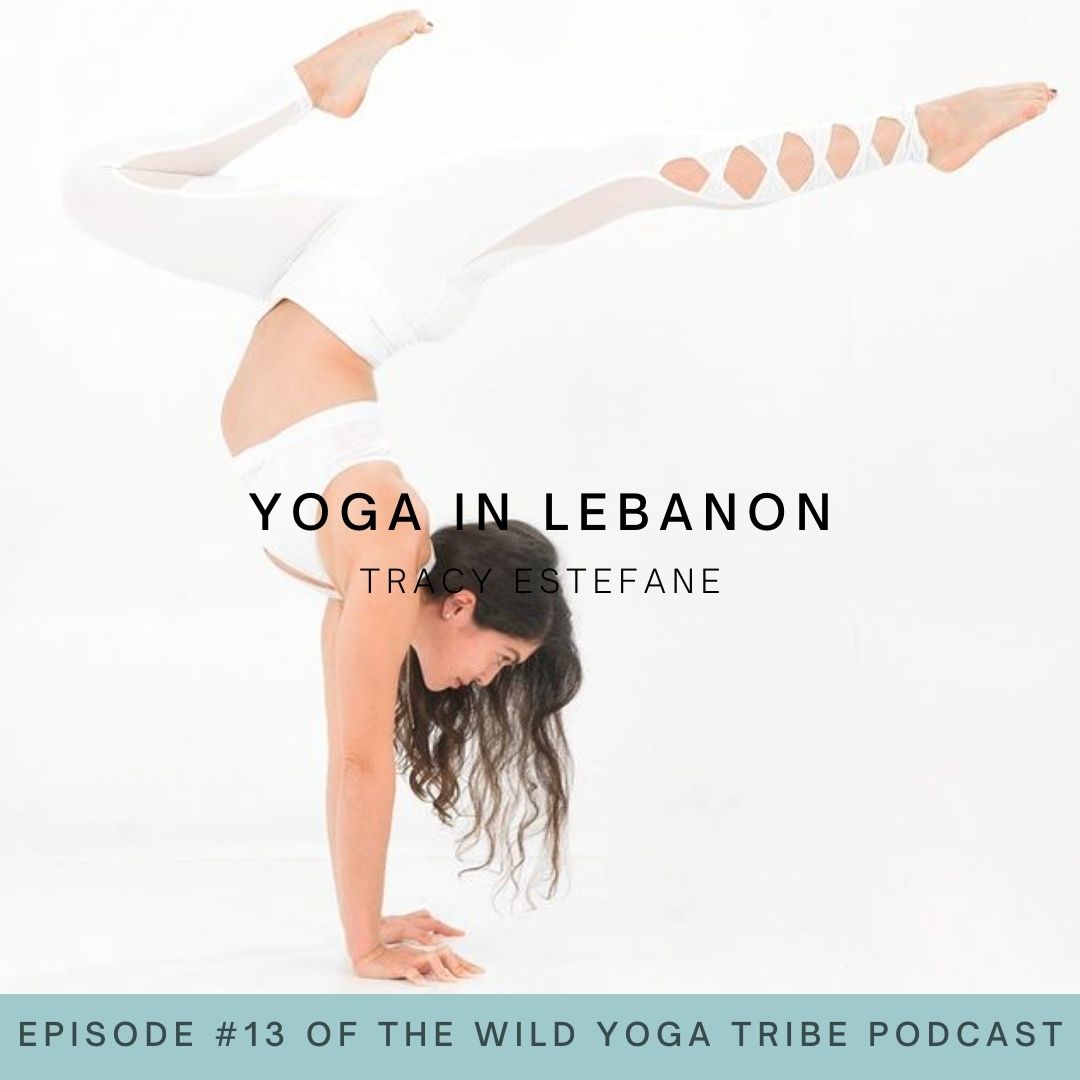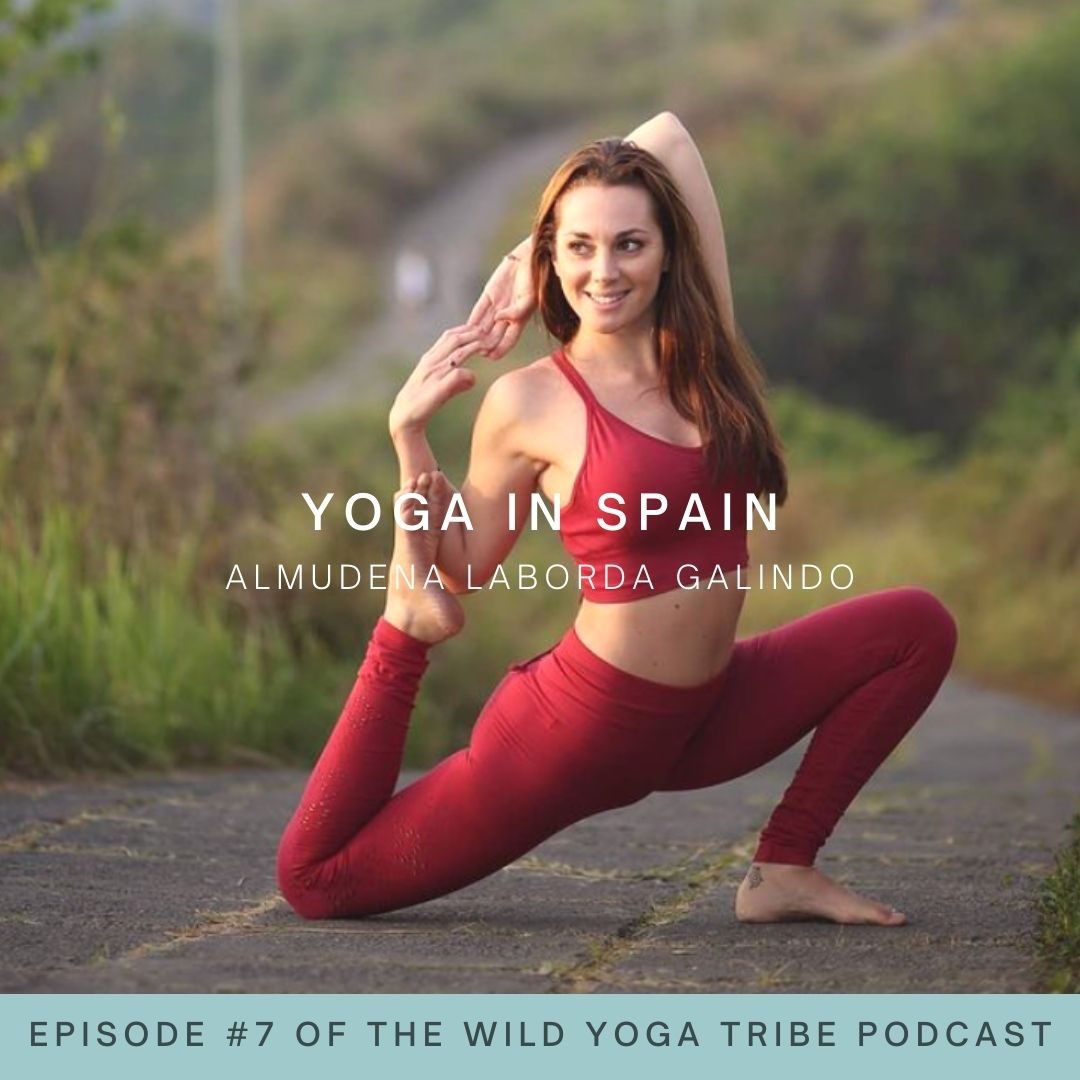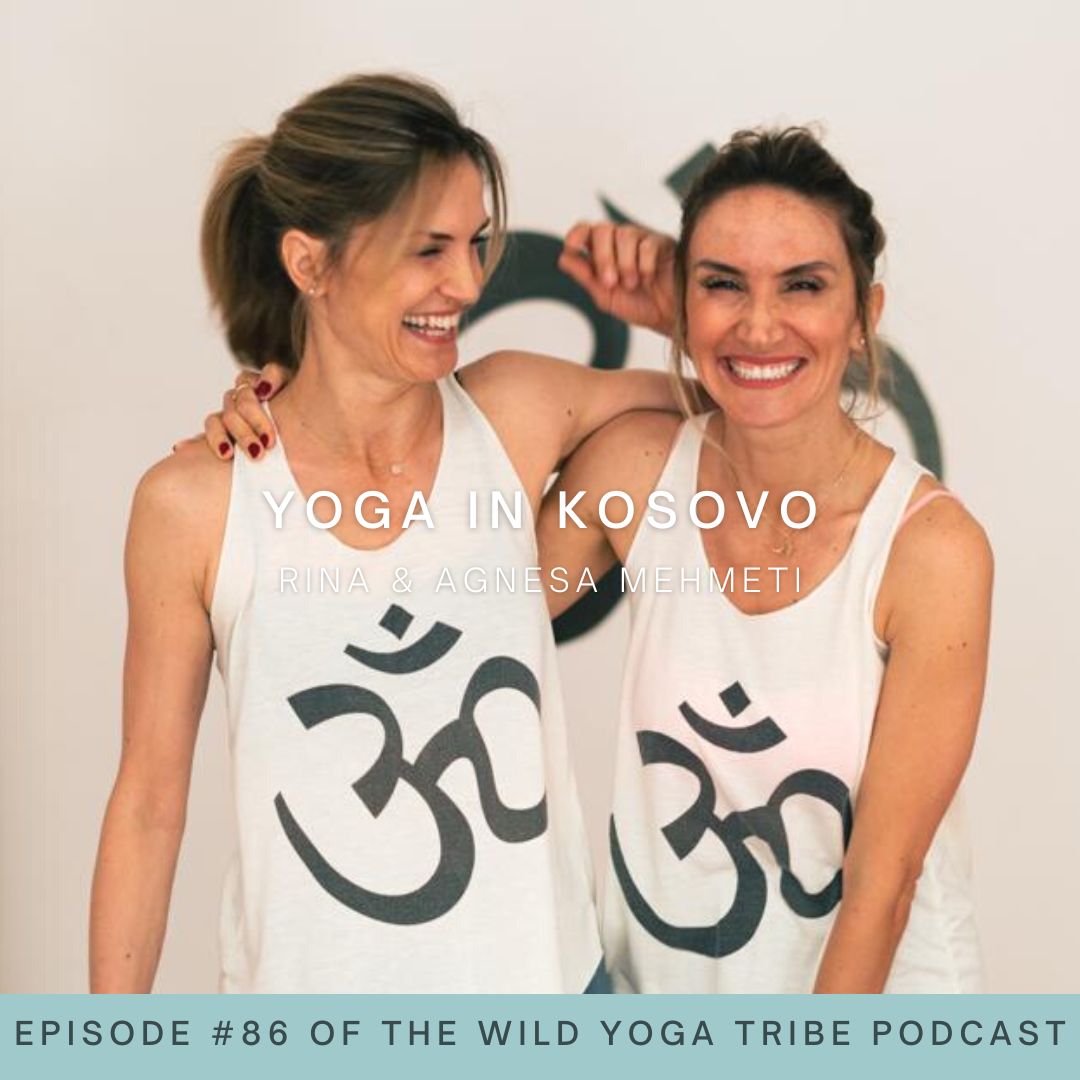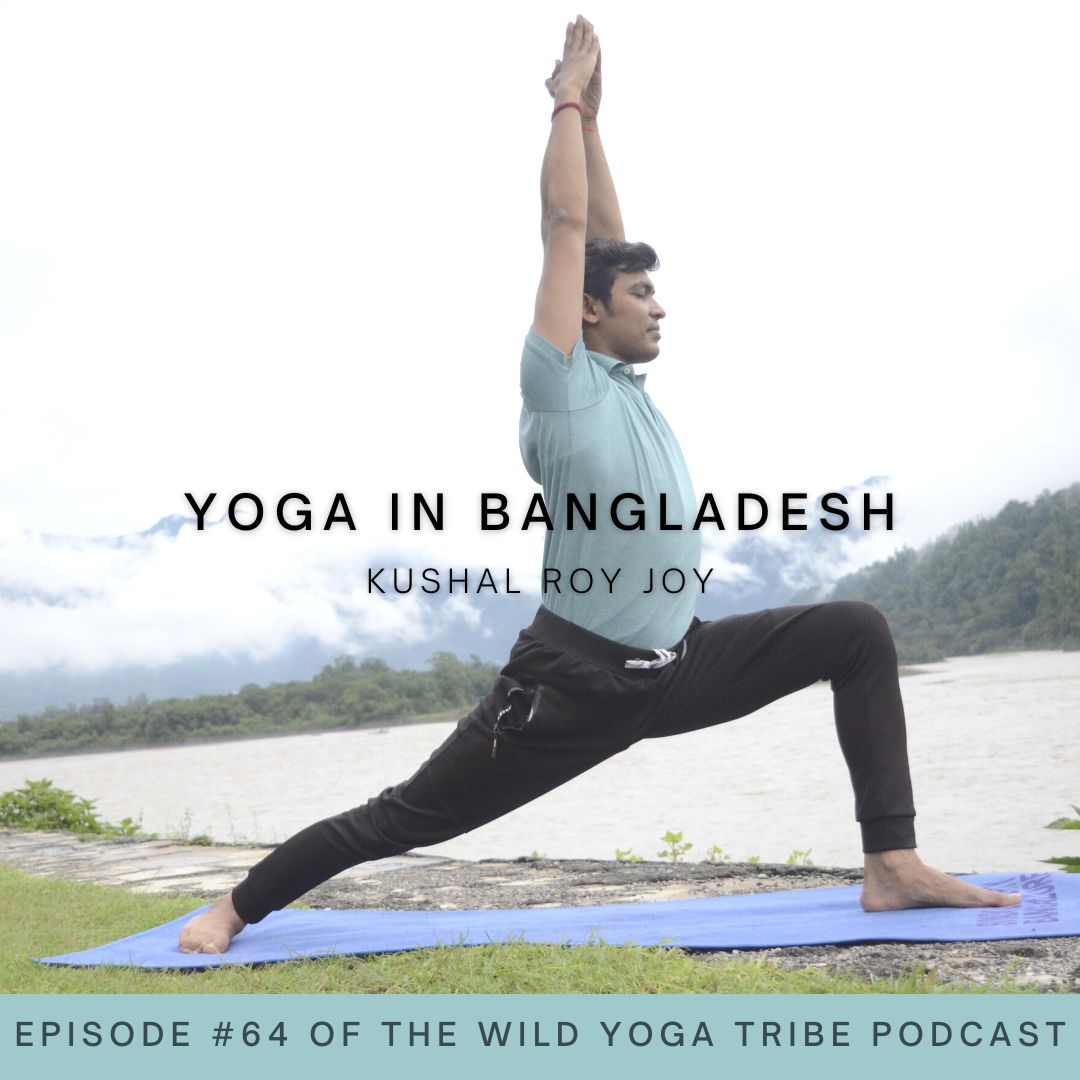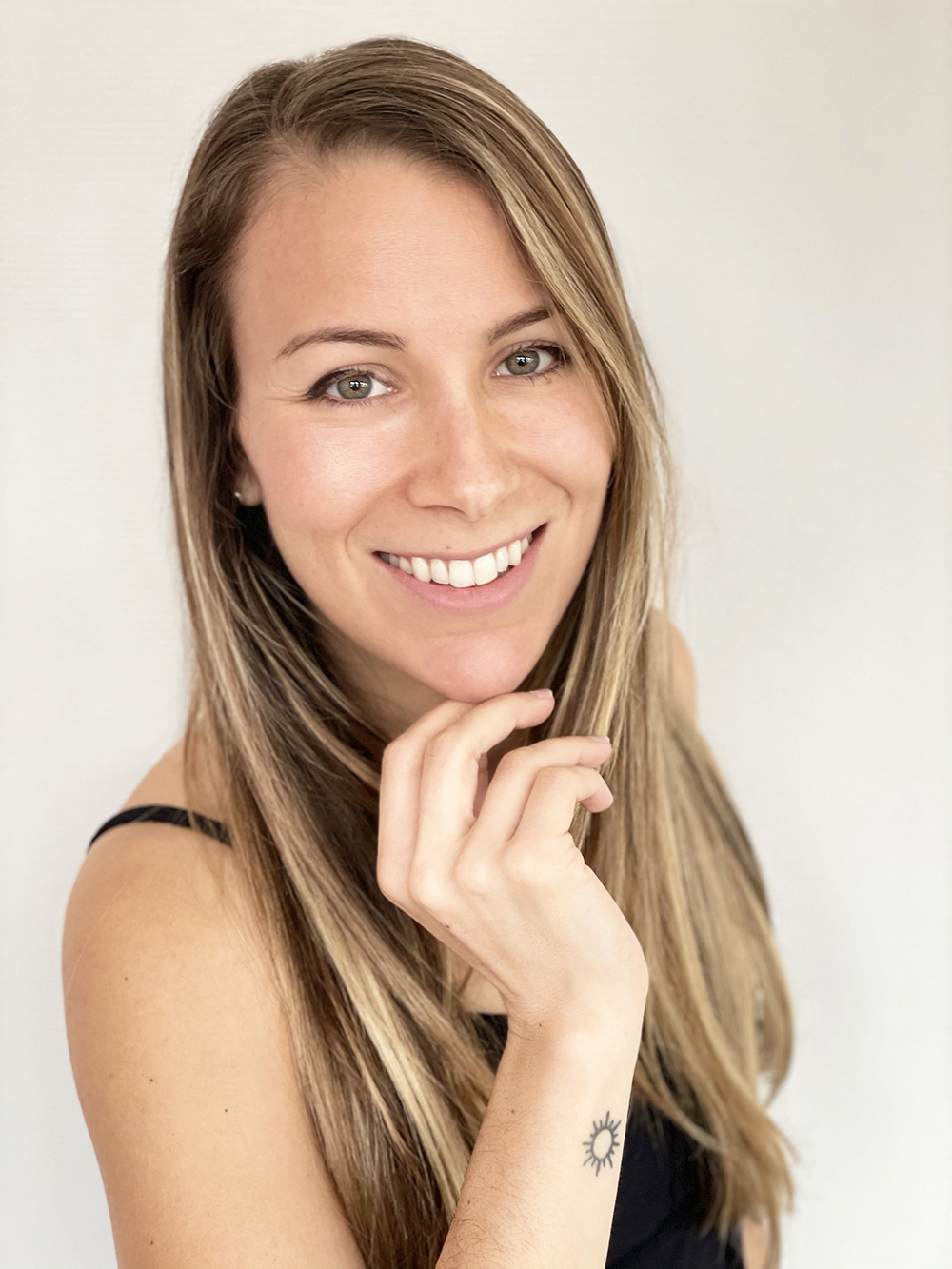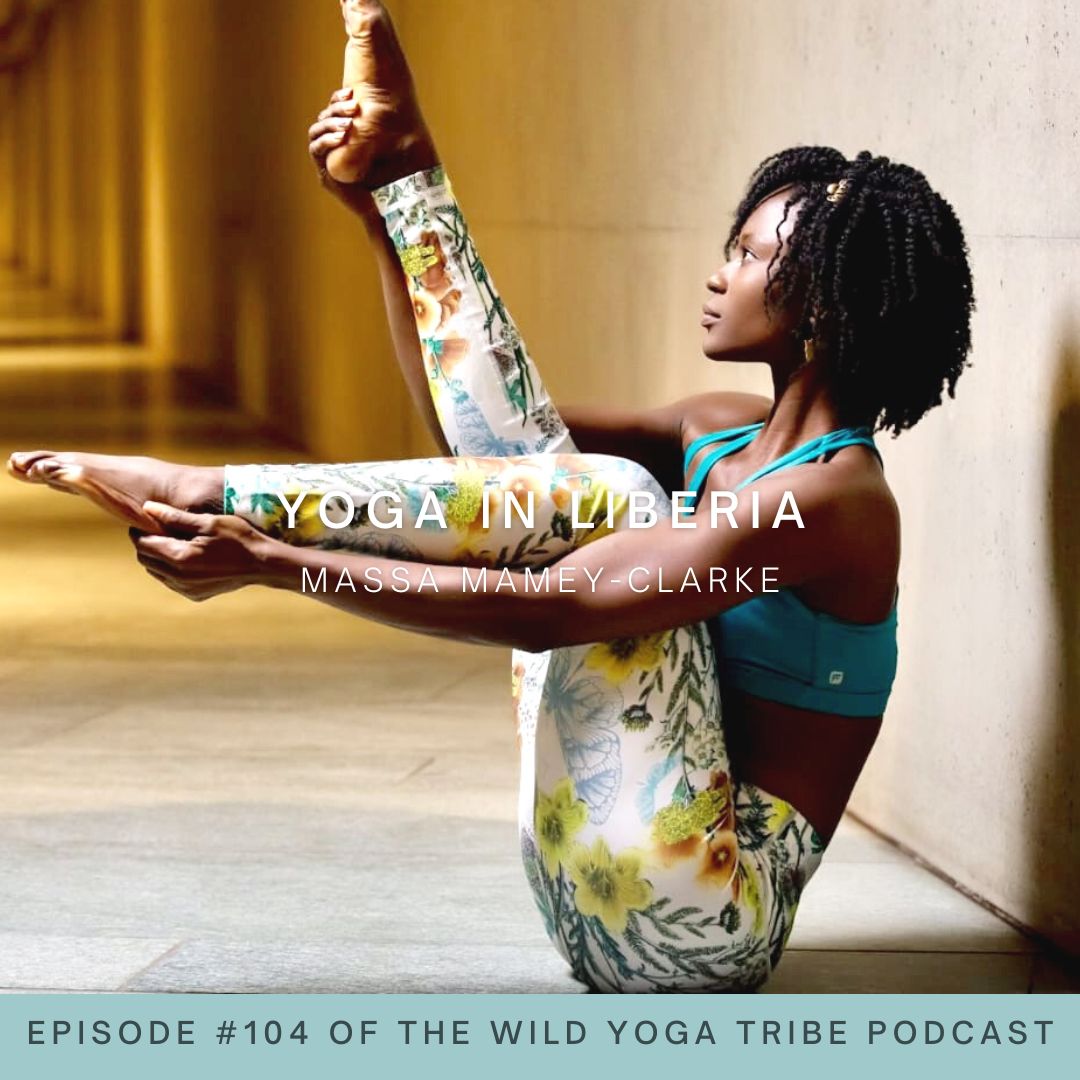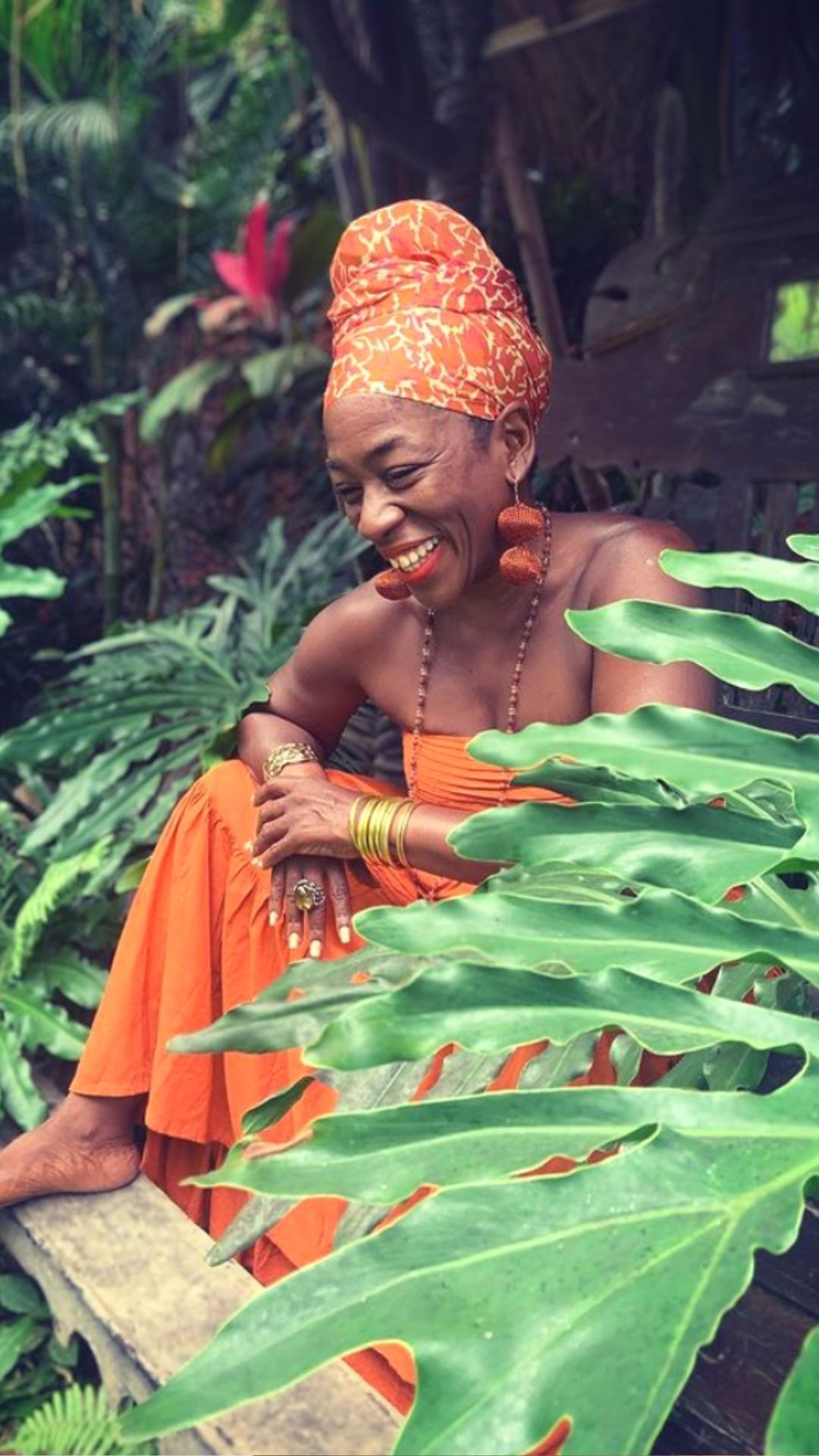
EPISODE #10 – YOGA IN JAMAICA
Meet Nadine McNeil
Meet Nadine McNeil, a yoga teacher from Jamaica who teaches us all about yoga in Jamaica! Michelle teaches us about the power of women circles and unlocking what the body is trying to tell us. Welcome to yoga in Jamaica!
Wild Yoga Tribe Podcast Episode #10 – We are not rising, we have risen – Yoga in Jamaica with Nadine McNeil
Welcome to Episode #10 of the Wild Yoga Tribe Podcast! This week, I welcome Nadine McNeil onto the show. She is an E-RYT 200hr yoga teacher from Jamaica who teaches yoga at Yoga Barn in Bali and leads yoga retreats in her home country of Jamaica. She is the former UN Chief of Operations in the Central African Republic, and has lived a life of service in emergency response, prior to her dedicating herself to healing others through yoga.
Nadine also goes by the moniker, Universal Empress, a name that embodies her energy and her intention. She is a global being, and believes wholeheartedly in the power of women. As she says, “We are not rising, we have risen.”
Get ready to deep dive into a powerful conversation about listening to the body, tuning into your inner navigation system, women’s circles, and what Nadine envisions as the future of yoga for the Western world.
Excited? I know I am. Get ready to dive in!
Tell me more about Nadine McNeil
Nadine McNeil is no stranger to moments of crisis. A global gallivanter who goes by the moniker Universal Empress online, for nearly two decades, prior to her deep dive into yoga in 2008, Nadine travelled the world in service of the UN, UNICEF, Global Volunteer Network and Organization for the Prohibition of Chemical Weapons. She was the former UN Chief of Operations in the Central African Republic and UNICEF humanitarian who is now based in Bali as a yoga instructor and personal coach at Yoga Barn in Ubud. These and other experiences rooted Nadine’s continued devotion to activism.
Nadine McNeil is the founder of the BadAsana Series©: Yoga with Weights.
This Yoga Alliance [CE] certified program is one that integrates 1 to 3 kgs weights intelligently within a hatha-vinyasa flow practice. The purpose of this synergistic practice to support the body in building physical strength, endurance and stamina, while respecting and adhering to the main tenets of yoga, primarily through breath and alignment awareness.
Nadine McNeil’s mission as a yoga teacher, speaker, wisdom mentor, and humanitarian is to ignite infinite possibility in people around the world and share yoga especially with diverse underserved communities. Inspired by her firsthand encounters with both the resilience of the human spirit and also its suffering, Nadine’s talks, workshops, yoga sessions, Women’s Circles and retreats are continually described as powerful, moving and insightful.
As her Women’s Circles continue to gain global traction, women from across the world who have sat with her in Circle, have returned to their communities to offer this necessary and important work. Nadine’s personal mantra for this work is: When one of us suffers we all suffer. Yet when one of us heals, we all heal.
What to expect in Episode #10 of the Wild Yoga Tribe Podcast – Yoga in Jamaica
Nadine and I open up this episode of the Wild Yoga Tribe podcast talking about how yoga came into Nadine’s life. She initially came to yoga through a gym and fitness background, and then got involved in Bikram and then Ashtanga yoga.
We then dive into how yoga is listen to the body, and how to “unlock or unpack what the body is trying to tell us.” As Nadine goes on to say, “We as human beings somehow evoluted ourselves into thinking that we are way more sophisticated than we actually are, and if we can just drop in, and tap into the wisdom of the body— the body will always take care of us.” We talk about the animal instincts of our bodies and how to listen to the messages that our bodies are trying to tell us.
Wondering what are women’s circles? Have you heard about women’s circles but have been confused, or maybe curious, about how women’s circles translates into a contemporary context? Nadine leads women’s circles both virtually and in-person, and she fills us in on how she structures the circles and what the purpose of the women’s circles are— to be a space of support and celebration.
Did you know that yoga was first designed for young men? Nadine and I talk about yoga for women, and needing to know when to rest, when to create, and when to manifest. Yoga for women is different than yoga for me.
What do you think? Are you going to tune in? Nadine and I are waiting for you to join us!
For the skimmers – What’s in the Yoga in Jamaica episode?
- What is your body telling you?
- How to unlock or unpack what the body is trying to tell us
- The power of Women Circles
- Yoga for Women – tuning into our built in navigation system
- Tapping into our animal instincts
- Movement as trauma healing
Favorite Quote From Nadine McNeil
“I feel that where women are today, and the world knows this largely, we are the emerged leader. We are not rising, we have risen. We are here— front and center. And when we are able to galvanize, and come into unity, community, and come into oneness we are able to support each other. And as we support each other, collectively, we rise.”
What’s in the Yoga in Jamaica episode?
Feel like skimming?
What is your body telling you?
How to unlock or unpack what the body is trying to tell us
The power of Women Circles
Yoga for Women - tuning into our built in navigation system
Tapping into our animal instincts
Connect with Nadine
https://linktr.ee/universalempress
https://www.facebook.com/UniversalEmpress/
https://www.instagram.com/universalempress/
https://www.youtube.com/channel/UCu0WJJ8lg9aQuYzYgT76oEA
Want more?
https://wildyogatribe.com/thepodcast/
Everything you need is just one click away! Check out all the resources here: https://linktr.ee/wildyogatribe
PODCAST TRANSCRIPTION
Read + Reflect + Respond
Wild Yoga Tribe Podcast Episode #10 – We are not rising, we have risen – Yoga in Jamaica with Nadine McNeil
Lily: 00:00:05
Welcome, welcome, welcome to the Wild Yoga Tribe Podcast. I’m your host, Lily Allen Duenas. Together we’ll talk about the world of yoga and we’ll talk to people from around the world. Join us for authentic conversations about the global yoga ecosystem, and we’ll cover yoga philosophies and methodologies, along the way. Inhale, exhale, we’re about to dive in.
Lily: 00:00:39
Namaste and welcome to this episode of The Wild Yoga Tribe. I am so excited; I am actually over the moon to welcome onto the show Nadine McNeil. She’s a yoga teacher from Jamaica and is a Global Gallivanter who goes by the Moniker Universal Empress. For nearly two decades prior to her deep dive in yoga in 2008. Nadine traveled the world in service of the UN, UNICEF; a global volunteer network and organization for the Prohibition of Chemical Weapons. She was the former UN chief of operations in the Central African Republic, and UNICEF humanitarian who is now based in Bali as a yoga instructor and personal coach at Yoga Barn at Ubud. Nadine is the founder of the Badassana series, which is a yoga with weights continuing Education Certification Program through Yoga Alliance, and it’s her mission, Nadine’s mission as a yoga teacher, speaker, wisdom mentor, and humanitarian is to ignite infinite possibility and people around the world and share yoga, especially with diverse underserved communities. So thank you so much Nadine for joining me on the show today.
Nadine: 00:01:57
Thank you so much for inviting me. The joy to be here.
How did yoga first come into your life?
Lily: 00:02:01
So Nadine, I would love to just start off by asking you how yoga first came into your life?
Nadine: 00:02:09
With the million-dollar question that we are asked, how did yoga come into my life? I think that yoga phoned me at the most perfectly imperfect time. What do I mean by this? I am largely from a fitness background. I had worked out in James’s run a couple of half marathons, I’ve always been very exercise oriented. And I was living in the Netherlands at the time I was first introduced to yoga. And in fact, I went to Pilates before yoga. And a friend of mine suggested I try it out that sort of flatlined at the gym, I was bored. And she said “Why don’t you try adding some yoga to your program?” and so I did, and it’s kind of comical because for the first several tries I absolutely hated it, but yet I still, I still kept going back. So something had me coming back. The practice that I really sort of took to, initially and followed for quite some time was in fact. And while, maybe for about three or four years I did pick them consistently six days a week, and then on Sundays I would do a double whammy and do too fast. And you know, with that, like with everything else that you need enough practice something else, opens up. And so from there I was born to Ashtanga. And so my general practice, you know, having entered through a physical outlet was initially very physical. And then somewhere, I started practicing shortly after 9/11. I also had a major breakup with an engagement, our break, and so at some point around 2008, I felt like I wanted to learn more about the philosophical aspects of this practice that was creating a deep and meaningful shift in my life.
Would you like to talk a little bit about beyond the Asana, like how that has captured you?
Lily: 00:04:22
Wow, I didn’t know that you came to the yoga practice through big from and to do double Whammies on Sundays, oh my goodness that’s normally a day of rest, and the Ashtanga tradition, technically, how I was taught was that Sunday is the day to rest and to absorb all the practice. So it definitely seems like you did come to yoga through the physical route but clearly now, I feel that yoga for you Nadine really is transformative. It goes beyond Asana. I know that you do a lot of other modalities of yoga like women’s circles, and different practices. So, would you like to talk a little bit about beyond the Asana, like how that has captured you?
Nadine: 00:05:11
Absolutely, and I love that term beyond the Asana, sounds like a podcast title to begin with. That’s really interesting. You know it’s funny what you just said about knowing when to rest in these practices and these strong practices, because over time and over the years I have moved away from a very young practice. So I do teach young practices. For example, my yoga with weights which I’m sure we’ll talk about later on. And so, as I deepened in the philosophies and started to learn more and, you know, see the impact of pranayama, breathwork, and meditation, that became more of my yoga. And so for me, when I think of yoga, it’s an integration of life experiences. It’s the physical, it’s the mental, it’s the psychological, it’s the spiritual. And the body is our access, are our gateway to many of the software elements of our lives. So, one of the things I am very foundational on in my teachings and practice is, what is your body telling you? because the body knows something before the cognitive gets involved and start to analyze and criticize and judge, and try to figure things out, your body will speak to you first, you know. We need someone we talk about the butterflies in the stomach, we get, fight or flight, we talk about our founding heart. We talk about not being able to express ourselves; constriction at the throat. And as you and I know and many of our listeners will, what I’m actually touching on there is that suffers chakra system. So if we can understand the messages of our body first, then we are able to apply to spread for meditation software movement, etc. To unlock or unpack whatever it is the body’s been trying to tell us. And then from that place we can enter safe spaces like women’s circles, you know, where women come to see and be seen and to be in a very safe, intimate and vulnerable space that allows them to courageous that allows us to freely justly, share our truth.
Could you speak a little bit more about what women’s circles are?
Lily: 00:07:54
You said that so beautifully about yoga being an integrative experience, and the art of listening to the body. To unlock and unpack what it’s trying to tell us I think is absolutely vital to the practice of yoga and to all of the asana, pranayama, the meditation, yoga nidra. It is all about getting to those subtler levels of our unconscious, to try to access those truths. Because I really do think we already have the answers to all of the questions. We’re trying to ask and pray for and see or search for, I think those answers are. We don’t need to look outside for them, they’re already locked up inside of us, so I’m really glad you spoke on that. And you just mentioned women’s circles a little bit. You introduced it and I know that some of our listeners might not be familiar with that term in a contemporary setting. Could you speak a little bit more about what women’s circles are?
Nadine: 00:08:53
Absolutely. Women’s circles are my favorite things to talk about so I love answering this question. So at our most basic level, a women’s circle… if we’re meeting in person, if something’s gonna happen in person as well as online, one of the gifts that we might not see it that we that the pandemic offered us, is finding alternative ways for us to gather. And you know as women; w o m e n, create tricks says givers of life. And even if we’re not giving life in the physiological sense of the world, women are highly adaptable creatures and beings. You know we have offspring to take care of, family to feed etc., and so we are quite resourceful. So as the pandemic dropped in, what I found is that I was able to seamlessly take the factors of gathering the women from all corners of the globe online. And in fact, it became even more important because we have sisters from Australia, from South Africa, from Europe, from the United States, from right there in Bali, from Jamaica, literally from all walks of life. The Women’s circle movement was largely born out of the Red Tent Movement. And one of the books that I highly recommend for anyone interested in the Red Tent Movement and or women for the book called Red Tent by Anita Damiant; must read at least once in your lifetime if you identify as female, women who run with the walls by various estates or estates. I sometimes get her name the other way, but that’s a legendary book for women who run with the world.
And so, I feel that where women are today, and the world knows this largely. We are the emerged leaders; we’re not rising, we have risk. We are here, front and center. And so when we’re able to galvanize them to come into unity, community, come into oneness, we’re able to support each other. And as we support each other collectively the rights. So, you know, a lot of circles, you can have a woman circle at any time, most of them tend to happen around either the new moon, which is a beautiful time for setting intention or around the full moon which is a wonderful time for manifestation. I tend to hold circles online twice a month, around the new moon and the full moon, but you can have a circle any time around any particular topic. There are circles out there that are exclusively for business, there are circles out there for mothers, there are a million different circles out there. I in fact run a program called “She grows women as a leadership training curriculum for living for today’s woman”. I teach that with Leah Santa Cruz, and we get women from literally all walks of life, just wanting to embody more of our feminine essence, you know. There’s so much, it seems as though we’re always making excuses and apologizing for our very existence, and the time to stop back is here.
Do you feel like there’s a difference in how women should be taught yoga versus men?
Lily: 00:12:37
Wow, I think you said that incredibly eloquently and you definitely have inspired me to read those books. The woman who runs with worlds, that book was actually gifted to me by an Australian woman I met at a monastery in Nepal outside of Kathmandu and we were on the same Buddhism course and yeah, she gifted me with that book. And so I’m not dug enough into it, it is quite a heavy tongue, but there’s so many inspirational words on every page, so I’m very excited you have inspired me for that. But Nadine I wanted to ask about women’s circles… and then you’ve got me thinking about yoga for women versus yoga for men. Do you feel like there’s a difference in how women should be taught yoga versus how men, or the practice should be shaped in a certain way to kind of serve the you know the cycles or the energies of women and how that’s different?
Nadine: 00:13:42
Wow, that is such a beautiful question, thank you so much for asking that Lily. Before I respond to that question, as I heard you share the experience about having this book being gifted to your women who run with the words like the practice of yoga. I think that book is one of those that finds you when the time is right. It’s a little bit like the autobiography of the yogi. Prior to dropping into them, if you’re not yet ready to receive the medicine from them, it does come through as heavy reading. Yet, you know when the student is ready, the teacher appears, when you’re ready to absorb that material. You sort of drink it in it reminds me of that other book, particularly the… what’s the name of the book? “The Power of Now”, I was given three copies of that book and gave them away before I was actually ready. When I finally did, it virtually saved my life. And it’s one of the few books that I’ve actually listened to as an audio. So, you know, just to see when the time is ready, that material will be absorbed within. Moving on to your question about women’s circles and Women’s Yoga. Excellent question. Excellent question, because as many of us may know the practice of Asana as we know it, particularly Ashtanga yoga was first designed from young boys in the Indian military. So here we are, you know the westernized evolution revolution, and most of the people showing up at studios, certainly in North America and Europe, happen to be women. What a woman is required to practice as yoga to me aligns perfectly. We have been gifted with a built in navigational system and that system is our moon site. If we’re living in accordance with our moon cycle, as you said earlier on Lily. There are days that you know you rest you do not practice Asana. So for example, the Ashtanga lineage let us say Sunday… in the Ashtanga lineage, women are encouraged or discouraged from practicing. At least the first three days of foresight. The process of bleeding is a detoxification process for women. So for example when we choose to do inversions during our moon cycle, it is counter intuitive to how our bodies were designed. So, practice around the time of your moon cycle. There’s a teacher in Bali, Tina Nam who has done a whole teacher training program and a heart segment. This is all about how women practice in alignment with their hormones. What happens when we push ourselves beyond our hormone levels where we get a tap. Our dream is our kidneys, and our liver, and sort of to bring us back to where we are in 2021. The area of the female body that has been most impacted by this, consistent with a chronic and consistent one of the same stresses that we’ve been living on, is our hormone systems and our dreams and our endocrine system. So, absolutely. Women need to back these different things at different stages of the game. We need to know when to rest, we need to know when to create, we need to know when to manifest, and all of that is already built into us. So, our practice as it were, to align with that moon cycle.
What do you envision as the future for yoga and westernized societies?
Lily: 00:17:45
I think you hit it on the head there. We have this built in navigation system inside of us that tells us, and if you track it you know you can, you can track which days you have more energy or which days you feel that it is time for rest or which days you feel like you really need to kind of, you feel empowered and strong like it’s part of the cycle, these hormonal changes. So I think that there’s something about yoga, like the toppas, the austerities and the discipline of it. The showing up every day the challenge like there’s so many elements that feel very masculine that feel like of course this yoga practice was created for initially for those young skinny Indian boys to accomplish and there we forget that the yoga practice is different for every single body, because the actual skeletal system, as well as the endocrine and the adrenal, it’s just different for every single person. So I think having a teacher who can kind of guide you on that as well as doing your own work, to study your cycle and to acknowledge what days are necessary for rest or for power or internal work maybe with more meditation involved, I think is really an integral. So Nadine we’re talking about these great, just beautiful big topics. So of course I kind of would love to ask you, what do you envision as the future for yoga and westernized societies? And now a big question but I would love to hear your wisdom on that.
Nadine: 00:19:25
We begin with our younger ones; we begin with the children you know. Many of us as adults come to yoga, either through an emotional crisis, a physical health crisis, or some transition, as it were. And a lot of this, particularly for women is, it says as though we have to unlearn to relearn. Imagine if children and we’ve seen the impact of this in schools that have, you know, brought mindfulness, as it were, into the curriculum, you know. That karma children are less likely to crave sugar, they’re less likely to have a high vitality diet. They’re more likely to become, which ultimately has a positive effect on their result. You know, one of the things that has happened with us living in a patriarchal construct is that we become very goal oriented, very achievement oriented, which is a very male normative competitive way of doing. As women, our approach is more collaborative, communicating, building, you know, alliances as it were. So that’s one of the things I see with Yoga moving forward and, you know, as you mentioned, thank you so much, I’m always humbled when I hear my accolades, and even as a woman for a very long time I didn’t own those accolades, because to do that would appear almost as the why we’re being pompous. But you know, when I think about years of doing emergency response and logistics in the field. Working as an aid worker within the UN system and elsewhere. High divorce rate, high sex addiction, high alcoholism and other addiction. This is because we are working in an environment that is incredibly high stress, where there is no built in support system to help us manage all of that intensity. So what do we do, it’s natural that as humans we look for ways of escaping.
So you know, for example, I remember being in the Central African Republic, and offering yoga on a voluntary basis to my family, and other people that were interested, and everyone spoke about favorably so about, you know, how moving their body how to alleviate the stress, sitting in meditation helps them to calm the mind so they were more responsive and reactive to life. So I believe that yoga is a tool and it doesn’t matter what your religious orientation may be, what color you are, what ethnicity, you know, what gender, etc. If there is a tool that we can tap into immediately as human beings, I’ll share an interesting story with you after this. Then we’re just supporting ourselves in the most holistic and organic fashion, you know, as we’ve seen recently, Heiti has suffered yet another massive earthquake, and minutes before the earthquake, I was teaching on a retreat here in Jamaica, and I was invited to round and being aware and highly connected to my intuitive self, for whatever reason. I had all of us out on the lawn with this gorgeous long face. And something I hadn’t taught before, ever, but I was guided this morning to teach people how to shape, how to just move energy through their body shape. And in less than five minutes after we completed, we found the earthquake here in Jamaica. And so what I wonder is, was I picking up something energetically from the earth, because if you think of animals, think of a dog, think of a cat, when an animal is frightened in any way, they stretch and they shake. It removes the trauma from the body. We as human beings somehow have alluded ourselves into thinking that we are way more sophisticated than we actually are. And if we can just drop in and tap into the wisdom of the body, the body will always take care of.
Lily: 00:24:06
Oh my goodness, I couldn’t agree more. We have convinced ourselves that we are these highly evolved creatures that shouldn’t be tapping into those animal instincts we have. But absolutely, I love that the shaking releases all of the stress and when there’s been a trauma. As well as I heard this story about how when, let’s say we used to be chased by a lion or a bear and that stress level, that stress response in our body, you know is intense this fight flight freeze, you know we’re maybe we’re running, and then what happens when we escape is we show up to our community to our village, and we would say, you won’t believe what just happened. I was just followed by a bear. I just ran and this happened and by sharing, as well as the moving of the body that the actual act of running or if you were to freeze, I suppose, and all things went well then you would probably run home after the act of freezing. It’s that physical release paired with the sharing element that is missing now, because I think, of course Nadine, I’m sure you know and I’m sure a lot of our listeners know that our sympathetic nervous system responds the exact same to a bear chasing us as we do to a stressful exam or a stressful meeting. It’s the same response in the body. So the fact that now. The fact that we’re no longer having that physical release, as well as that community sharing aspect, is really negatively impacting our health, we no longer engage in that. Do you know what I mean, Nadine?
Nadine: 00:25:54
You have 195% hit the nail on the head. Absolutely, because what we find now, as you just mentioned Lily, is that the vast majority of humanity are living at a stress level so we’re constantly being chased by a tiger. And so our sympathetic nervous systems, our adrenal glands, we are a complete mess. It’s why we’re not resting well, you know, we’re addicted to these gadgets. I am not going to be, what is the word? I will admit that I’m a part of that equation, also we are tied to this gadget, which means that we can’t complete one singular thought. I mean, think about it 25 years ago, we didn’t hear people talk about ADHD, to the extent that they are today. And that is because we have too much information coming at us. And then you have the other situation where as women that I know we’re not exclusively as women but I seem to keep coming to this today, where we were celebrated as being efficient and highly effective. If we could do 17 things at one time alone, it doesn’t work as Deepak Chopra says, multitasking is that an antithesis to consciously, you cannot be present in 17 different theses all at the same time, it’s just not possible. We are not superhuman.
How do you think yoga has served or been challenged by this global pandemic?
Lily 00:27:24
No, we are not. We are human and I think that expectation of being superhuman causes a lot of fatigue, a lot of depression, anxiety and a lot of chaos in our bodies and our emotions. So since we’re speaking about a form of chaos, Nadine, how do you think yoga has served or been challenged by this global pandemic?
Nadine: 00:27:48
That’s another massive question and I think it’s a bit of both. I mean let’s face it, we’re almost coming into a two-year mark, and are dealing with this thing. I can still remember returning from South Africa. In March, Bali closed its borders 24 hours later. I really thought we would be dealing with this thing in quotation marks for about three months. By about June it became very apparent to me that we were in for the last board. By about October, it became even more apparent that this was going to come through to 2021, and I hate to be the bearer of bad news but intuitively and energetically, I do feel that we have a way to go. So to respond to your question, one of the things that was very endearing to see was the number in the early days. Again I talk about this human resilience today, but you know we all came out, we started to do classes online. But those of us as teachers who were accustomed to teaching online, it was a seamless transition. For those newer teachers or those who just aren’t comfortable on the screen there was a huge learning curve, even for me there was a massive learning curve because essentially it was so you were setting up a studio in your house where to angle our camera, how’d you get your voice, etc. So there was that aspect of it. However, what then happened is, we were in isolation, which, you know, further messes with the sight, like you know I think of children who have been homeschooled throughout this period. And we’re going to see in about a generation or so we’re going to see the impact of this time in terms of social inadequacies. You can already see, we virtually don’t know how to have a conversation with a stranger, unless we’re swiping left or right. One of the things that I also found incredibly profound is that, here it is that we’re dealing with a pandemic and that attacks, or so we’ve been told that part of the body that yoga most addresses is the breath. So learning how to breathe properly with three five breaths, abdominal breathing. Are you able to hold your breath between seconds? How can you invert the breath is the main to calm things such as anxiety? From the macro to the micro, I think that possibility, but you’re going to redesign it and reconfigure it so that it does show up everywhere from the boardroom to the bedroom. A tremendous opportunity has been given to us.
Lily: 00:30:37
Yes, it is a tremendous opportunity, and I think that a lot, what I think is really impactful and amazing as you touched on with the women’s group is just being able to incorporate different people and bring them in and to gather together in a way that wasn’t possible before. Maybe you’re a mother with five young children at home and just attending a class in Ubud would be absolutely impossible. But, you know, signing on to a class. Once the kids go to bed is absolutely perhaps feasible for you and your schedule so I think incorporating these people who perhaps wouldn’t be able to attend or to gather together I think is really a gift of the pandemic. I know saying gift and pandemic in the same sentence was a little intense, but I hope our listeners will forgive me for that. And Nadine, I would want to also touch on the offerings that you do offer, I mean I mentioned that people around the world might want to join in and I know you offer a royal reset and transformational coaching and Dharma dialogues, I would love to talk to you a little bit more about the amazing offering this you are here to share and serve with.
What are your yoga offerings, and other offerings?
Nadine: 00:31:57
Oh thank you so much, Lily. You know there are so many ways to work with. From group settings to working one on one to working in person in retreat format. The Dharma dialogue, in fact, was born out of the pandemic, because what I recognized about three to six months into the pandemic is that people needed an outlet beyond yoga. Yes, we were moving our bodies, but we also needed to find a way to process our thoughts about what was happening at a cognitive level. So, the Dharma dialogue is essentially a 75-minute offering, where about 35 minutes of it more or less is devoted to breathwork pranayama, and yoga inspired movement, and then the remaining portion involves some journey, and some mentoring and coaching, around a particular time. The Royal reset is the other end of that very spectrum, where you come to Jamaica, a beautiful island, and we work one on one to five days and four nights. Even before you promote to Jamaica, we do one coaching or mentoring session online or via zoom, lots of one on one. There’s quite a bit of back and forth for communication that happens, because I then send through to you some information where you then share even more about yourself so that I’m able to give you your retreat.
So you will get as much space as you need on the retreat. Who is this retreat for if you’re working on a project you’re in transition, you know, between careers, let us see you’re not quite sure which way to go. We do a few exercises where we unpack, where you’ve been, where you are and where you choose to eat their stuff, you’re working on a book. I myself am a writer, you’re at a certain point, what’s the next step that you want to take in that. You are about to enter into some shift in your relationship. Anyway, there’s a whole range of ways in which we can take. And so while you’re on the ground here for five days and four nights, there’s daily meditation, daily movement of the body. We spend somewhere between two and three hours each day on tracking whatever it is, the issue that we’re working through. There’s space for you to have massages all of your needs are specially designed for you. If someone is interested in something like plant medicine arrangements can be made for that so that that is really a bespoke offering, with a huge degree of anonymity and confidentiality. Because one of the things I’ve also found lately is that you have some people that are, they know they want to do some work, they just don’t want to do the work in a group setting, for one reason or another, these retreats speak to that. I also offer three to six months, group coaching programs. The next one is going to start at some point during the first week in September. I limit that to about 10 people. We need every other week in a zoom session for about 90 minutes in between that, there are email assignments, you have an accountability forge, you get certain work to do. And then we discuss and unpack that. In the subsequent sessions. And then if someone wants to just simply work one on one. I also offer one on one mentoring you notice I hesitate, each time I have to use the word coaching, because I actually don’t like it, but it’s a word that kind of relate to, I believe that what I do is that I offer mentor in a folder sacred space with a mirror that you are able to see yourself sometimes for the very first.
What are your social media handles just so people can know to look for you?
Lily: 00:36:13
Wow, all of your offerings sound like incredible space and containers for transformation and for discovery and for attunement. So I love all the work you’re doing Nadine and I thank you for it, and I hope my listeners will tap into the show notes which will be here, wherever you’re listening to the podcast, it’ll be right here on the episode. You can find all of Nadine’s links and information on her offerings as well as on my website the wildyogatribe.com, that will be there as well so Nadine, what are your social media handles just so people can know to look for you?
Nadine: 00:36:54
Oh, thank you so much. On Instagram, which is where I’m most active these days, it’s Universal Empress, or one word. Also my YouTube channel, I find listeners to visit my YouTube channel. There’s a whole range of various talks that I have there. I do something called woman talk, where about once a week or once a fourth night, I have a conversation with a woman who has positively impacted my life. One of them that’s there at the moment, very interesting as we touched on in this talk just about how we’re impacted by our moon so in that particular talk I’m speaking with my acupuncturist Michelle Hanson, who is based in Bali, and just a whole range of topics everything from ethnicity to consciousness to gender to a couple of yoga classes, a couple of meditation practices there also. And of course my website universalempress.com.
How did Universal Empress come to you?
Lily: 00:37:54
Thank you, Nadine, so how did Universal Empress, that moniker, come to you? I love it.
Nadine: 00:38:03
Yes, thank you for that. Coming from Jamaica, and having lots, which is largely associated with the Rastafari and culture, as well as within India. In Jamaica, a woman who has locks is referred to as Empress. And if you are deeply entrenched in your Rastafari and culture, you mostly have your hair covered because your hair is seen as your covenant, your crown as it were, hence the term imprints. The universe submitted to me was quite natural. You know, I’ve lived and traveled all over the world, and one of my taglines is to make them both universal in Outlook. So it was just a natural fit and it seemed to go really well, Universal Empress. Little did I know, as I named myself, what I would be living into. I haven’t regretted it for a moment. Some of those instances have been a hell of a lot easier than others, but as we also know that growth often comes through immense adversity.
What is the yoga scene like in Jamaica, these days?
Lily: 00:39:20
Yes. That’s an amazing story to the well deserved well earned title. And Nadine I know that you’ve been teaching yoga internationally and you’ve been based in Ubud for a while now, but I know you’re in Jamaica now and leading the universal resets in Jamaica. What is the yoga scene like in Jamaica, these days? I’d love to hear more.
Nadine: 00:39:41
You know the yoga scene in Jamaica is in a deep place of transition at the moment. We do have a ton of qualified teachers on this island and proud to be some of the best teachers I’ve encountered are here. However, you know, like everywhere else impacted by the pandemic, many of those studios have closed. Yoga is not necessarily mainstream in Jamaica. I would say, largely because there’s some resistance pushed back because it’s such a Christian fundamentalist country and society. But yoga has certainly come a long way, and it continues to grow. Their retreats are being held on this island, many foreigners coming here for the retreat. I am before facilitating a beautiful retreat with one of our top teachers Sharon Vianne. 21 to 24 October is a soul boarding retreat for women also alongside another food show Hoosier works with crystal balls and she’s absolutely amazing. So, the scene emerging here certainly is nothing close to Bali or Costa Rica. But we certainly owe it to ourselves globally.
Lily: 00:41:09
Thank you for sharing that with me Nadine. I was in Jamaica for a trip back in 2000 and I think it was three, it was a long time ago but it’s such a vibrant Island and has so much energy to it. I think it would be an amazing place to practice yoga, so I’m glad you’re leading your retreat and I really hope all you out there do your listeners, take a look again at Nadine’s website and our social media and check out her offerings. So thank you so much Nadine for being on the show with me today. It has been a joy to be with you.
Nadine: 00:41:42
Thank you so much for this opportunity, and I just want to see, at the risk of sounding salesy, that the October retreat is almost sold out. So if it’s something that you jump on too quickly you can find out about it on my bio on Instagram, and the Royal Reset, there two spaces left in September, at the moment. So, thank you so much, and I just want to acknowledge you for the work that you’re doing, and taking the time to really ask insightful questions. I truly appreciate it too. Thank you.
Lily: 00:42:22
Thank you, Nadine, so much. As I said, it’s been a true joy.
Nadine: 00:42:25
Thank you.
Wild Yoga Tribe Podcast Outro
Lily: 00:42:31
Thank you so much for being here and listening to Nadine’s insight and expertise on women’s circles and how yoga can serve the lunar cycles and the moon cycles, and also how yoga has been challenged and served by this pandemic. There has been a lot of light that has been shown on a lot of different things because of this pandemic and I think that Nadine was very eloquent in discussing that, as well as listening to our bodies, releasing the strength of the strength and I made up a new word stress and tension in our body through shaking or asana and through listening and sharing is profound. So thank you again for being here dear listener, I know your time is precious. It has been an honor to be with you as well. Thank you, and be well.
Feel like getting social connect with me in the Wild Yoga Tribe, social media on Facebook or Instagram to head on over to the wildyogatribe.com to tap into some pretty awesome resources, meditate with me on Insight Timer, a free app on Apple and Android devices, and join me for a yoga class on YouTube. Jazz up your week and get a bit of yoga in your life. Remember to hit subscribe so that you never miss an episode. And if you feel called please share this episode with someone that you think could benefit from it. Leaving a review would also be so appreciated. Thank you again, dear listener for being with me. May your day be light and bright. May you be peaceful and happy, and lead on the right path, free of suffering and free of sorrow. Be Well dear one, be well.
[End Transcription 00:44:14]
[Music Outro 00:44:14]
Copyright © 2022 Wild Yoga Tribe LLC. All rights reserved. Transcripts are generated using a combination of speech recognition software and human transcribers, and may contain errors. Kindly check the corresponding audio before quoting in print to ensure accuracy.
The Wild Yoga Tribe, LLC, owns the copyright in and to all content in and transcripts of the Wild Yoga Tribe podcasts, with all rights reserved, including right of publicity.
What’s Okay
You are welcome to share an excerpt from the episode transcript (up to 500 words but not more) in media articles (e.g., The New York Times), in a non-commercial article or blog post (e.g., Elephant Journal), and/or on a personal social media account for non-commercial purposes, provided that you include proper attribution and link back to the podcast URL. For complete transparency and clarity, media outlets with advertising models are also welcome to use excerpts from the transcript per the above.
What’s Not Okay
No one is authorized to copy any portion of the podcast content or use Lily Allen-Duenas’ name, image or likeness for any commercial purpose or use, including without limitation inclusion in any books, e-books, or on a commercial website or social media site (e.g., Instagram, Facebook, etc.) that offers or promotes your or another’s products or services. Of course, media outlets are permitted to use photos of Lily Allen-Duenas from her Media Kit page or can make written requests via email to receive her headshots folder.
